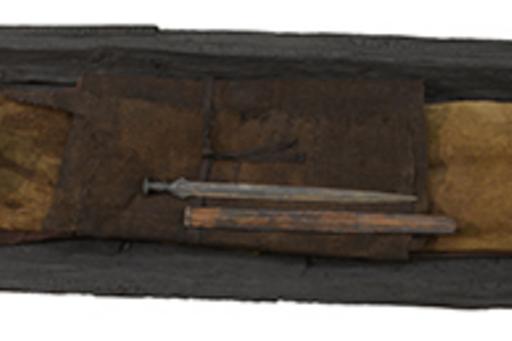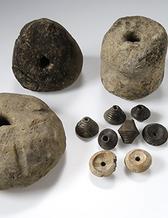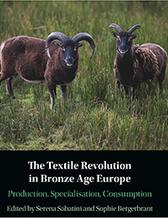- Home
- News and events
- Find news
- Textile production – a driving force in Bronze Age Europe
Textile production – a driving force in Bronze Age Europe
Wool, yarn and finished textiles were an important part of the economy and trade networks during the Bronze Age. This is shown in a book that is the first to focus on textile production in Bronze Age Europe.

"The production of textiles has long been an overlooked topic in many historical periods, as it has been assumed to be part of every farm or household’s self-production and therefore seen as relatively insignificant from an economic perspective. With the book, we want to show that textile production, on the contrary, was an important part of the Bronze Age economy and society,” says archaeologist Serena Sabatini, one of the book's two editors.
Until now, fundamental research in textile research have given archaeologists a picture of all textile fragments that are preserved from prehistoric Europe. In addition, there is plenty of research on how these textiles were created, what techniques were used and how much time and knowledge that was required. But the book Textile Revolution in Bronze Age Europe is the first to highlight the production, specialization, consumption and trade of textiles during the Bronze Age in Europe.
Scientific methods

It is already known from written sources that the manufacturing of wool textiles played a major role for several local economies around the Mediterranean during the Bronze Age. In the rest of Europe, such sources are lacking, and researchers must instead rely on archeology and scientific methods such as isotope analyzes, DNA studies and analyzes of proteins.
The various contributions in the book cover several geographical areas, such as the current Nordic countries, the British Isles, Italy, Germany, Central Europe and Poland. Important pilot projects that show the results about the textiles’ origin, quality and characteristics that can be achieved with the help of science are presented.
For example, archaeologist Sophie Bergerbrant, the book’s second editor, has written a chapter describing how researchers can use isotope analyzes to go back to archaeological textile finds and discuss the import and export of different types of textiles.
“Isotope analyzes of strontium made on textile finds have challenged our preconceived notions by showing that a larger part of the wool found in, for example, the Danish oak-log coffins did not have a local origin. The study shows that large quantities of textiles were probably imported to the Nordic countries during the Bronze Age,” she says.
Skilled craftsmanship

Other chapters in the book deals with how textiles during the Bronze Age were used and that even the simplest garments in some steps required a skilled craft, something that involved training, a long-term planning and not least access to a large workforce. In other respects, the various chapters contribute to better knowledge of a relevant part of the Bronze Age economy and of how important data on textiles and textile crafts can be investigated with new methods and interdisciplinary collaborations.
“The Danish researcher Marie-Louise Nosch, one of the authors of the book, has suggested that the Bronze Age should change its name to the Wool Age when it comes to the eastern Mediterranean. Our book confirms that textile economy and especially wool were at least as important as bronze in large parts of the rest of Europe. Thanks to comparisons with the Mediterranean and its text sources and new analysis methods, it is now becoming possible to see archaeological material in the form of textiles, wool and other fibers with new eyes and work to highlight the role of textiles in the continent's prehistory,” says Serena Sabatini.
Link to Cambridge university press
Contact:
Serena Sabatini, phone: +46 31 786 5217, email: serena.sabatini@gu.se
Sophie Bergerbrant, phone: +46 31 786 4501, email: sophie.bergerbrant@gu.se